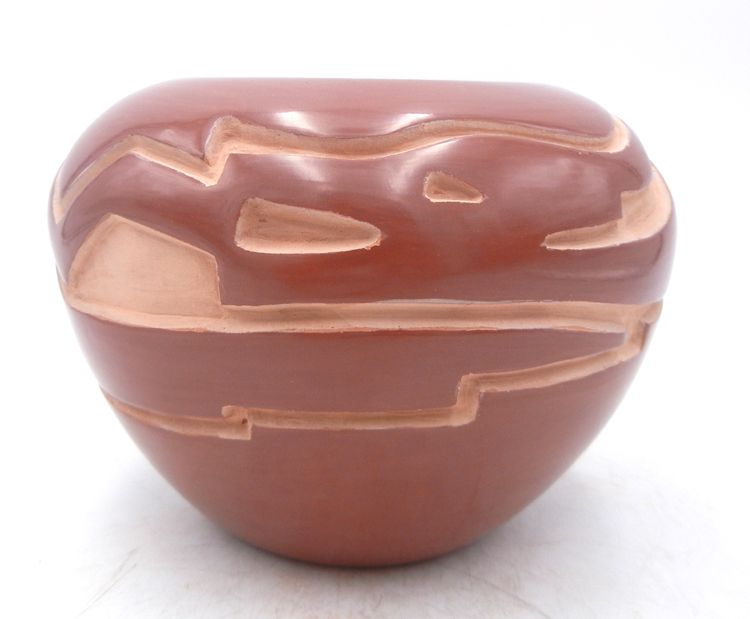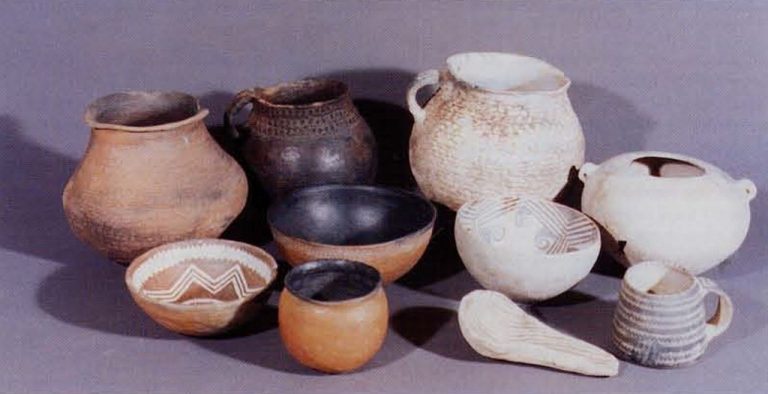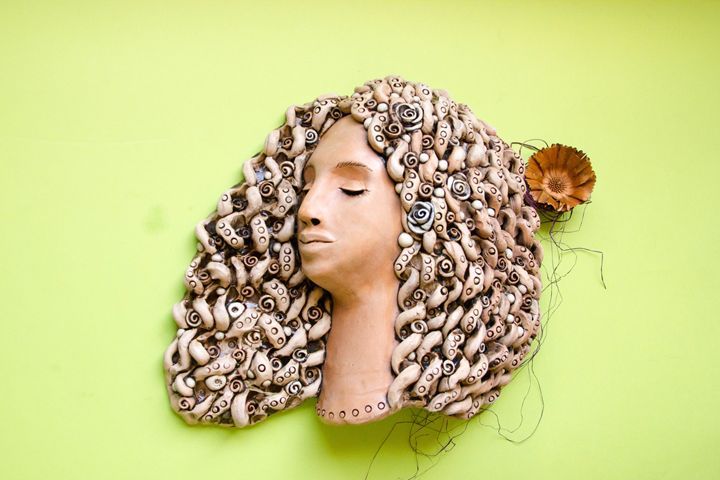What Is The Main Function Of Ceramic Art?
Ceramic art refers to objects made from clay and ceramic materials, hardened by firing at high temperatures in a kiln. Ceramics have been made for decorative and functional purposes for thousands of years across nearly all civilizations globally. The history of ceramic art dates back to ancient cultures including China, Mesopotamia, Persia, Egypt, Greece, and Rome Ceramic art – Wikipedia. Ceramics were first developed as earthenware pottery used for storage and cooking. Over time, ceramic techniques advanced and civilizations developed refined porcelain wares, tiles, figurines, and other decorative objects. While the earliest ceramic artifacts were simple earthenware, technical innovations allowed ceramic artists to create refined glazes, specialized clay bodies, and intricate forms. Today, ceramic art encompasses a diverse range of styles and techniques for both decorative and practical creations.
Creative Expression
Ceramic art allows artists to express creativity in countless ways through the manipulation of the clay medium. Ceramics is praised for its tactile nature and immediacy – artists can quickly shape, mold, and transform the clay using their hands (Ceramic Art: A Timeless Expression of Creativity, 2022). The pliability of the clay enables immense creative freedom in forming the shape and structure of ceramic artwork. Artists may sculpt smooth, rounded forms or jagged, faceted shapes to communicate different feelings. The size, proportions, and visual weight of the artwork can also be used expressively.
In addition to form, glazing introduces new dimensions of creative possibility through the imaginative use of color, pattern, and texture. Glazes can produce a vast spectrum of colors, surfaces, and effects. The nature of high-fire glazes means the final results can’t be entirely predicted or controlled, often leading to exciting creative discoveries. Texture and patterning pressed into the clay or created through carving and piercing provide more visual interest. Overall, ceramics offers broad potential for free, innovative expression through its multidimensional physical qualities.
Functional Use
Ceramic wares such as plates, bowls, cups, vases, and other containers have served important utilitarian functions for thousands of years. Across many cultures, ceramic vessels have been essential for storing, serving, and transporting food, water, and other goods. The durability and versatility of fired clay has made it ideal for creating objects for everyday practical use.
Examples of common functional ceramic wares include plates, bowls, mugs, pitchers, jars, pots, and colanders used for food preparation, serving, and storage. Ceramic pots have long been essential for carrying and storing water. Decorative vases and jugs hold flowers or other objects. Teapots and cups facilitate the drinking of tea. Bakeware like ramekins and pie plates cook food in ovens. Ceramic materials are also crafted into pipes for smoking or plumbing systems.
Beyond kitchen and dining uses, ceramic art has functional roles in religious ceremonies, cosmetics, lighting devices like oil lamps or candle holders, and much more. The variety of ways ceramics can be shaped and fired to create objects of different sizes, durability, porosity, and heat resistance has made this medium highly versatile for crafting utilitarian goods. While serving practical functions, ceramic wares can also incorporate artistic elements like painted decoration, glazes, textures, and more.
Sources:
Preservation of Culture
Ceramic art plays a vital role in preserving the cultural traditions, customs, and stories of societies across history. The timeless medium of clay allows artisans to capture cultural beliefs, values, and narratives in material form, serving as a tangible connection to the past (Source 1). Pottery, in particular, elegantly encapsulates the artistic spirit of a culture, with techniques, motifs, and designs passed down through generations as living heritage.
For instance, Oaxacan pottery from Mexico vividly reflects Zapotec and Mixtec cosmology with symbolic animal motifs and scenes from myths and legends. The laborious processes involved in creating the pottery are themselves imbued with cultural meaning that links present day artisans to their ancestors (Source 3). Through such enduring ceramic arts, cultures are able to preserve their intangible heritage and connect the past with the present.
Spiritual Significance
Ceramic art has long held spiritual and religious significance across many cultures. The malleable nature of clay and its ability to be shaped and transformed has made it a powerful symbolic material.
For example, in Christianity and Judaism, God is often described as a potter who shapes humans out of clay. The Bible references God forming humans from the “dust of the ground” like a potter shapes clay into vessels (Genesis 2:7). This symbolizes the close relationship between the divine Potter and His earthly creations.
In ancient Greek mythology, the titan Prometheus molded humans from clay. Aztec mythology describes the gods Quetzalcoatl and Xmucane as the creators who shaped humans from clay. The Rig Veda of Hinduism also contains multiple references to a divine Potter who created humans and living beings from clay or dust.
Across cultures, the malleable nature of clay and its ability to be molded into sacred vessels and objects has contributed to its spiritual symbolism. From Hindu diyas to Native American pottery to Christian chalices, ceramic arts have long played a role in religious rituals and ceremony.
Many ceramic artists today also imbue their works with spiritual meaning or reference religious iconography and symbols. For example, this article discusses a ceramic artist who incorporates spirals and circles as symbols of wholeness and change.

Decoration
Decoration is a key function of ceramic art. Ceramic objects and tiles have been used to ornament and beautify spaces for centuries
(Foods & Beverages / Hanging Decorative Tiles / Home …).
Decorative ceramic art adds visual interest and aesthetic appeal to both public and private spaces. Ceramic tiles, murals, mosaics, and reliefs are often used to embellish walls, floors, ceilings, fountains, and more. The ornate patterns and colorful designs found in ceramic decorative art create a sense of vibrance. Decorative ceramic objects like vases, plates, and figurines also allow people to beautify their living spaces. Ceramic art offers limitless ways to enhance décor through creative shapes, intricate patterns, and innovative glazing techniques. Overall, decoration is a central purpose of ceramic artwork.
Communication
Ceramic art can communicate meaning and convey information in various ways. According to the article “The Language of Ceramic Art”, form is an important means of artistic expression and communication for 3D artists. The physical shape and structure of a ceramic piece can symbolize certain ideas or convey emotions. Texture, color, and surface design additionally contribute to the overall visual language. As explained in the Ceramic Arts Daily forum post “Contemporary Ceramic Vessels As A Communication Tool?”, contemporary ceramic artists often embed cultural identity and meaning into their works. The vessels become a medium to share stories, values, and perspectives. Overall, ceramic art utilizes various visual and physical elements to communicate symbolically with viewers.
Economic Value
Ceramic art holds significant economic value, both historically and in contemporary markets. Pottery production has been an important industry and source of income in cultures worldwide for thousands of years. According to The Economics of Pottery Production, pottery making has relatively low barriers to entry, with affordable tools of production like kilns and potter’s wheels. This has allowed pottery to thrive as a localized industry in many cultures.
Today, handmade ceramic art ranges widely in monetary value depending on factors like the artist’s reputation, size/complexity of the piece, and rarity. According to Clay Culture: Pricing Artwork, artists often calculate prices based on materials, time, overhead costs, and artistic merit. More utilitarian pieces like mugs or bowls often cost $10-$50, while rare or intricate artworks by renowned artists can sell for thousands.
Ceramic art’s economic value stems from its handmade, often one-of-a-kind nature and cultural/artistic significance. The global market for art pottery, valued in the billions, allows ceramic artists to support themselves and contributes to local economies.
Education
Ceramic art educates about the history, values, and ideals of past cultures. Pottery and other ceramics often depict stories, symbols, and events important to the civilization that created them. Through studying these artworks, modern societies gain insight into the beliefs, achievements, and daily lives of ancient peoples.
For example, Chinese ceramics from the Qing Dynasty frequently portrayed Confucian principles and moral lessons. According to scholar Wan Qingli, “The educational function of ceramic art from the early Qing period is mainly reflected in the following aspects: patriotism, integrity, etiquette, wisdom and faith.” Analyzing common motifs in Qing ceramics reveals the values this society wanted to pass on to future generations (The History of Chinese Ceramics).
Beyond transmitting cultural knowledge, creating ceramic art also educates the artisan. Mastering the complex techniques of working with clay requires extensive practice, careful study under experienced teachers, and learning from one’s mistakes. The creative process itself imparts valuable skills such as patience, perseverance and problem-solving.
Conclusion
In summary, ceramic art serves various important functions. It is a means of creative expression and can be used for functional purposes. Ceramic artworks also help preserve cultures and represent spiritual significance. They are used for decoration and communication. Ceramic art has economic value, and studying it provides education about history and cultures.
Due to these multifaceted functions and cultural importance, it is vital to preserve ceramic artworks. Conservation helps maintain their integrity and prevents degradation over time. With proper preservation, ceramic art can continue enlightening future generations about human creativity and diverse heritages.



